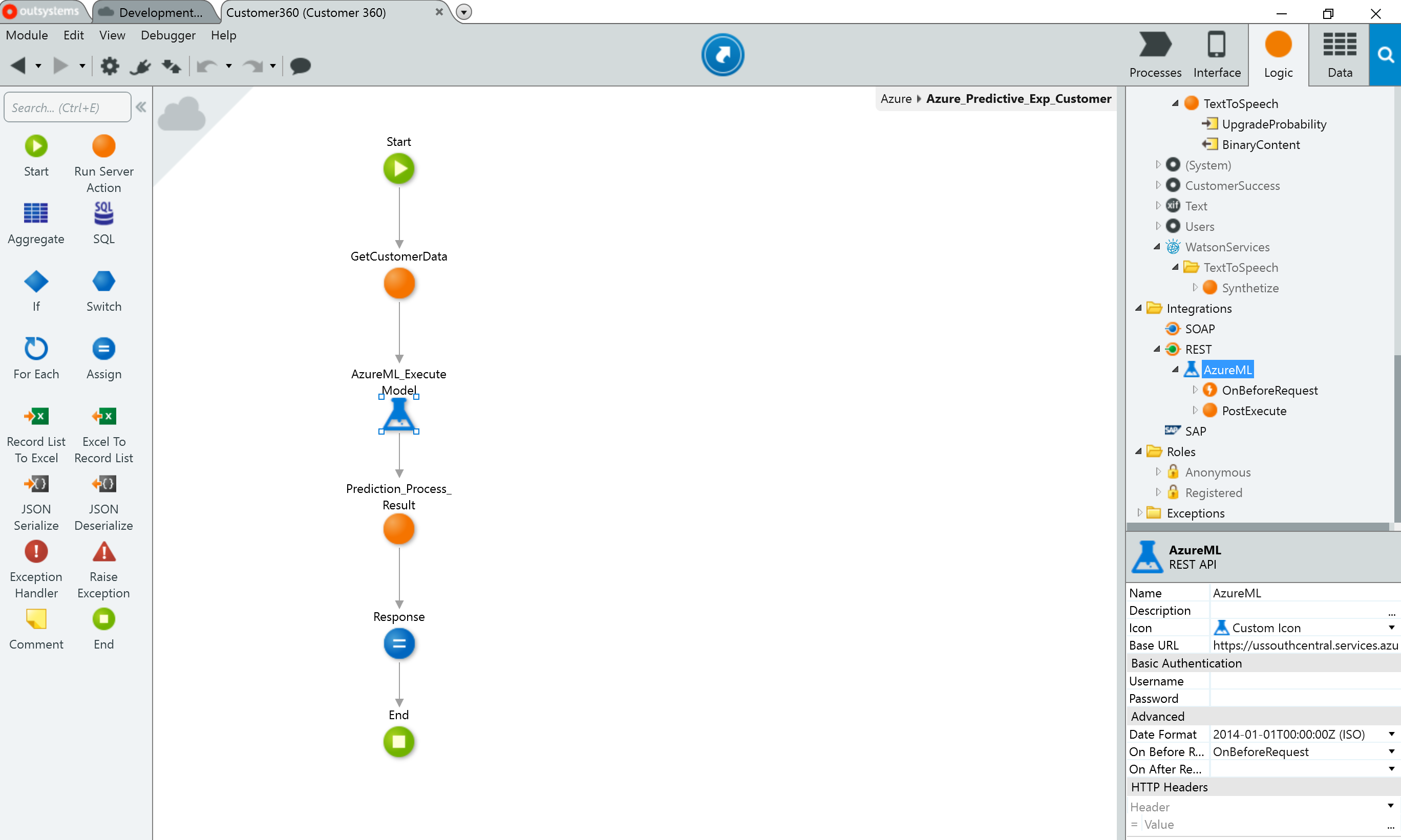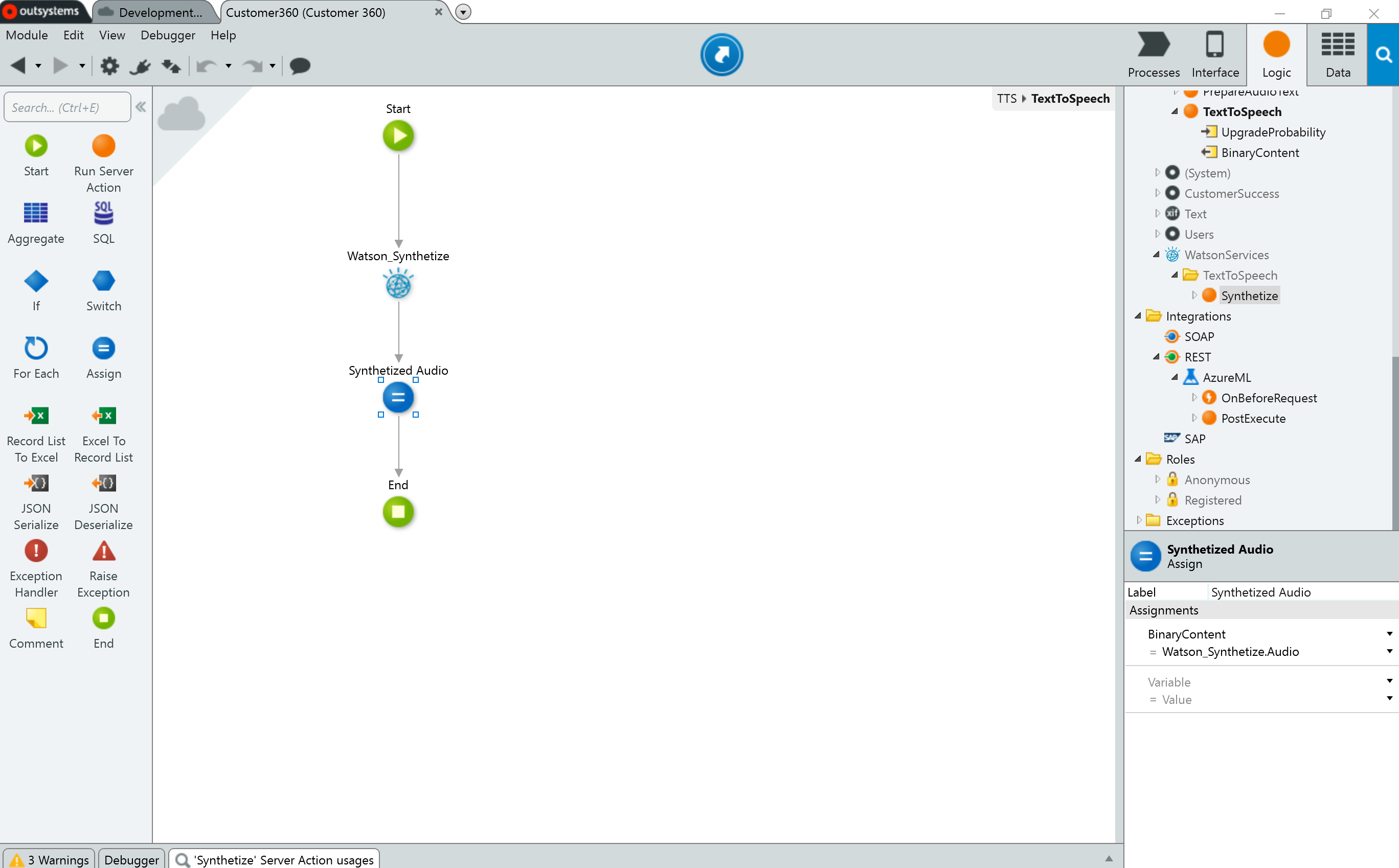OutSystems Looks To Blend AI, Low Code for Smarter App Development
Low-code platform provider OutSystems continues to build on its commitment to make it easier for app developers to bring AI and machine learning to app development. Earlier this year, OutSystems launched a multi-prong project to unify AI and low-code. IDN speaks with OutSystems’ Dan Juengst about the new ideas coming out of the convergence of low-code and AI.
by Vance McCarthy
Tags: AI, API, Amazon, Azure, cognitive, machine learning, Watson,

technology evangelist
"Just like we provide API connectors to work with SAP, Salesforce, Oracle and other enterprise software we’re now offering them to top AI services."
Low-code platform provider OutSystems continues to build on its commitment to make it easier for app developers to bring AI and machine learning to app development. Earlier this year, OutSystems launched a multi-prong project to unify AI and low-code. Called Project Turing (named after Alan Turing, father of theoretical computer science and AI), the initiative includes:
- A new AI Center of Excellence (AI CoE) in Lisbon, Portugal
- A pledge to commit 20 percent of its overall R&D resources to focus AI/ML
- Plans to partner with industry experts, technology leaders, and universities to drive original research and innovation in the field.
OutSystems vice president of engineering, Nuno Antunes, described the commitment this way, “Just like IBM Watson is using massive volumes of medical data from the Mayo Clinic to improve patient health, we’re in a unique position to leverage AI/ML and big data to identify best practices and create expert assistants that will significantly help our customers in the future.”
One of the main focuses of OutSystems’ efforts is the new AI CoE. It will initially focus on these three big projects:
Developing new AI Assistants to further accelerate application development. By providing best practice patterns, components, and widgets during application design, AI Assistants will make developers more efficient and become the new paradigm for pair programming.
Designing AI-based Analyzers that will decrease application maintenance costs. By analyzing the structure of complex apps before they are deployed AI-based Analyzers will be able to predict issues and monitor real-time usage patterns to make recommendations on how to improve and refactor applications.
Developing AI-based systems that could automatically recommend new app features. Such recommendations to improve new apps – or build new ones – will be based on insights derived from several key areas. These will include: large data sets of usage, error reporting, customer feedback, adoption rates, and business metrics.
The vision for Project Turing is to reduce the complexity of developing and changing enterprise software using AI, according to OutSystems’ CEO Paulo Rosado. “With AI, we see the potential to transform the entire software lifecycle where AI assistants help with everything from modeling new applications with the right architecture and user experiences to analyzing the business value and impact for the organization.”
OutSystems Project Turing also comes as analysts increasing focus on AI benefits to the enterprise. As an example, last summer Gartner noted, “Machine learning allows enterprises to implement models that would be impossible to build using human analysis due to the time required to do the analysis. Machine learning helps organizations discover hidden insights that would be impossible to identify through other means.” [AI Will Alter Application Development — Things to Do Now].

The commitment to an AI CoE comes as OutSystems is reporting an increase in use of AI and machine learning by enterprise software professionals. The company is bringing AI and machine learning capabilities to its low-code development platform, thanks to the connectivity powers of APIs and microservices.
The OutSystems low-code platform lets user simplify their app development with drag-and-drop design and no code connectors (via REST and SOAP APIs). By leveraging such APIs, OutSystems is allowing companies to let their apps work with three top AI services platform -- IBM Watson, Amazon’s AWS Machine Learning and Microsoft’s Azure Cognitive Services.
“Just like we provide API connectors to work with SAP, Salesforce, Oracle and other enterprise software we’re now offering them to top AI services,” Dan Juengst, OutSystems’ principal technology evangelist, told IDN. “The [AI/ML] services we leverage are the services from the cloud vendors. So the machine learning algorithm runs in the cloud and the data comes from IoT sensors, big data sources, or other data gathered by the applications themselves, etc. We build the connectors to work with cloud-based services, so this means developers can pick whatever [AI technology providers] they wish,” he added.
With the Power of APIs, OutSystems is Delivering AI, Machine Learning Capabilities to Low-Code Apps and IoT
Connections from apps built using the OutSystems platform connect to these outside AI and cognitive services through API-enabled add-ons. These extensions, which are pre-scripted to promote easy adoption, are available on OutSystems Forge, https://www.outsystems.com/forge/ a repository of reusable application modules, connectors and components for developers, Juengst said.
The Amazon Machine Learning Connector API allows OutSystems users to integrate with AWS ML SDK and supports the following methods: create and delete endpoints, get models and prediction.
The Wrapper for IBM Watson Services provides low-code tools for Watson deep learning algorithms for: translation, natural language understanding, text-to-speech, semantics analysis and visual recognition.
The Microsoft Azure Cognitive Services Connector enable natural and contextual interaction with tools that augment users' experiences using the power of machine-based intelligence. Tap into an ever-growing collection of powerful artificial intelligence algorithms for vision, speech, language, and knowledge.
“We just see usage of these AI services growing and growing into the future,” he noted. “Companies are applying cognitive learning and analytics capabilities to the data gathered from devices and sensors and discovering insights and information they aren’t necessarily aware that they have. This is increasing the power of IT in the digital transformation process.”
Juengst noted that AI and machine learning opportunities are on the rise as companies can collect so much data from app interactions, log data, and calls. The opportunity now is ripe for mining it all with machine learning algorithms.
“At OutSystems, we offer easy-to-use connectors that let customers integrate machine learning into their apps with little or no coding. With our connectors, we can quickly let customers integrate machine learning libraries and services directly into their app,” Juengst said. Another benefit of in-app AI is that it can dramatically speed up results and insights, he added.
To date, some OutSystems companies already report early wins. “We’ve seen examples where our customers are applying cognitive learning and analytics capabilities to the data gathered from devices and sensors,” Juengst noted.

As an example, he pointed to professional services firm Deloitte LLP who used OutSystems to build a machine-learning app to observe call center behavior and help companies improve interactions with their customers. It basically records thousands of hours of service and support calls and uses connections to IBM Watson’s sentiment analysis to score the interaction.
The app, called BEAT (Behavioral and Emotional Analytics Tool), takes in data and uses AI on it to spot potentially risky sales interactions. Deloitte uses the app to observe and capture data about call center behaviors and then through machine learning Deloitte can analyze the call recordings for important insights.
Rather than requiring customers to manually review hundreds of thousands of transactions, this OutSystems’ AI-enabled app makes this determination. As noteworthy as that outcome is, it’s also worth mentioning that the BEAT app was quick to prove out and build. Using the OutSystems low-code approach, Deloitte was able create a PoC (proof of concept) in under a week, Juengst said, and to deliver a fully functioning app in five months.
Combing AI with its low-code platform is also leading customers to discover new insights and information, and a basis for new IoT app ideas. With OutSystems’ approach, “we can deliver a fully-functioning app platform for AI, with integration components, data communication, decision tree logic and even visibility,” Juengst said. This combination will help bring low-code and AI to some powerful IoT use cases, he added.
As an example, ISB Global is using OutSystems’ AI capabilities in the waste collection sector. Its app combines IoT and AI to optimize the schedule and route planning for residential and commercial waste dumpster collection. The idea is to improve upon the way dumpster pickup has always been done. Maintaining a strict schedule of pickup for dumpsters can be orderly, but it can also prove inefficient when dumpsters on the schedule just aren’t full, while those that aren’t on the schedule are already brimming over with trash.
So, rather than emptying dumpsters on fixed days and static routes, ISB’s app combines AI and IoT to provide a more dynamic, responsive method. The app works in conjunction with IoT-enabled dumpsters and is programmed to “read’ a dumpster’s fill level on a set interval, process the data, and forecast the future fill rates. All this data and forecasting is then paired with a routing engine. The result: the app can determine when a certain dumpster will likely be filled, determine the optimal time to drive out to empty it and then generate dynamic routes to match needs to customers and the company for efficiency and cost savings.
Beyond the combination of low-code / integration / AI functionality, OutSystems also brings security, Juengst noted, applying some 196 security checks across the app.
Related:
- InfluxData's Latest Updates Optimize Time Series Data for Better Performance, Scale and Management
- Actian Zen 16.0 Update Simplifies Delivery and Boosts Performance of Edge, IoT Apps
- Virtana Infrastructure Performance Management Adds AI-driven Capacity Planning
- e2open’s Supply Chain SaaS Updates Help Firms Reduce Operational Risks with Deeper Visibility
- Report: Endor Labs Identifies 2023 Operational, Security Risks To Open Source
All rights reserved © 2025 Enterprise Integration News, Inc.



